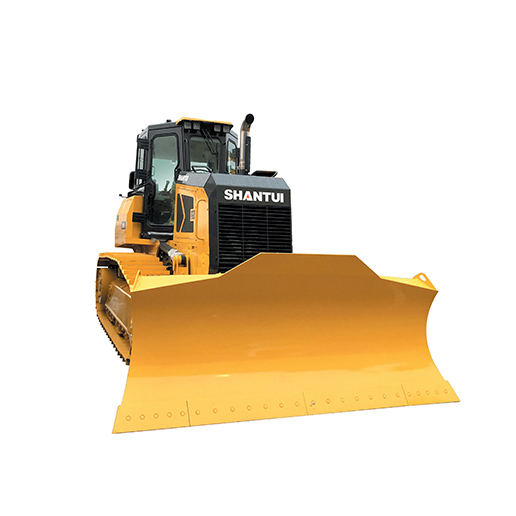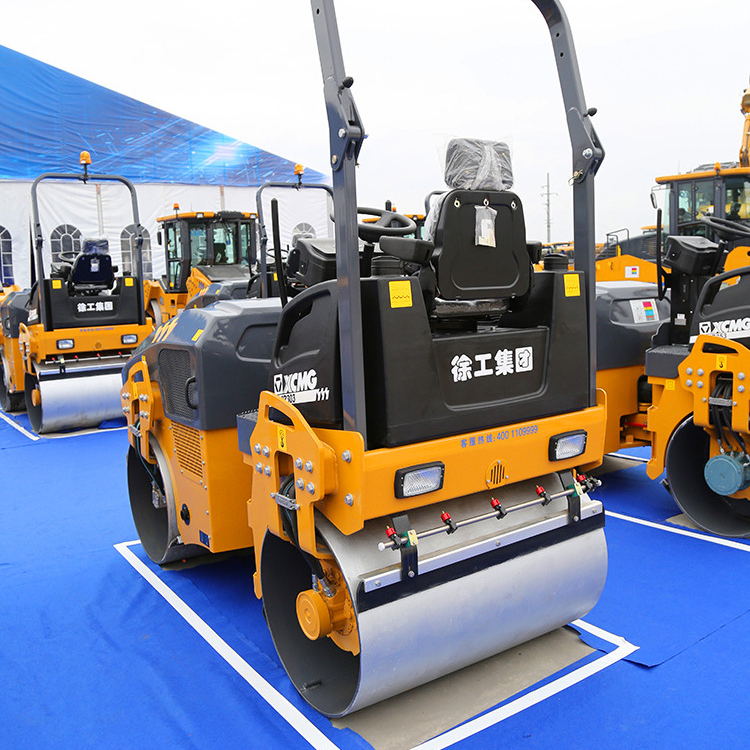April 26, 2023 05:03 ET | Source: Research and Markets Research and Markets
Dublin, April 26, 2023 (GLOBE NEWSWIRE) -- The "Global Autonomous Forklift Market by Tonnage (<5, 5-10, >10), Navigation (Laser, Vision, Optical Tape, Magnetic, SLAM, Inductive Guidance, Others), Sales Channel, Application, End-use Industry, Forklift Type, Propulsion and Region - Forecast to 2028" report has been added to ResearchAndMarkets.com's offering. Grab Bucket Crane

The autonomous forklift market is projected to grow from USD 4.6 billion in 2023 to USD 8.8 billion by 2028, at a CAGR of 13.8% from 2023 to 2028.
Growth in end-use industries and the adoption of automated material handling systems to improve material handling and logistics in Asia-pacific are projected to lead the autonomous forklift market.
The widening gap between supply and demand is driving up real estate prices in many developed nations. In Europe, the warehouse land is almost exhausted, but demand is still growing.
Maximizing space utilization in other developed nations in North America and Asia Pacific is important. This has become essential considering the rising population and consumer demand. Using an autonomous forklift helps maximize space utilization while cutting labor costs.
Growth of e-commerce, Logistics, and Warehousing Sector to trigger the adoption for autonomous forklifts.
Low cost of capital, fast return on investment (ROI), and a high degree of possibility of customization encourage manufacturing companies to invest more in factory automation and automated warehouses. Increasing demand for business-to-consumer(B2C), and business-to-business (B2B) products, due to which the e-commerce industry has resulted in tight deadlines and the need to procure and deliver a huge number of goods without errors. Thus, e-commerce companies have increased the adoption of automation in their facilities. The advantages of autonomous forklifts over conventional forklifts, such as reduced production time, fewer human errors, increased safety, high-volume production, and increased accuracy and repeatability, have spurred the adoption in e-commerce and other logistics hubs.
Warehouse automation allows for increased throughput, better resource utilization, reduced labor, less operational costs, decreased handling and storage costs, less human error, increased productivity, and efficiency. Hence, the warehouse automation market is growing.
The Indoor Type segment of autonomous forklift is expected to hold a dominant share throughout the forecast period as they are fast improving their ability to operate without human interventions.
The indoor segment is expected to hold a significant market share during the forecast period due to its application in the fast-moving goods industry. Indoor autonomous forklifts are swift and precise in order picking and storage, allowing their increased utilization in warehousing operations. They have enabled speedy response to the customization of orders, which was time-consuming with traditional forklifts.
E-commerce sales in the Asia Pacific region are increasing rapidly due to the growth of online shoppers driven by the rising adoption of the internet and smartphones. Increased growth of e-commerce in Asia Pacific resulted in the rising adoption of automated material handling equipment like autonomous forklifts by big e-commerce companies.
The big e-commerce companies in the Asia Pacific region prefer indoor autonomous forklifts to transport a pallet of 1.5 to 3 tons within the warehouse. Further, below 5-ton autonomous forklifts for indoor applications are the most efficient, compact material handling equipment in warehouses with a racking height of 10 meters or lower.
Further, with increasing demand for faster and more efficient order fulfillment, as well as the need to reduce labor costs and improve warehouse safety, the majority of e-commerce companies forming supply agreements with forklift manufacturers for autonomous forklifts. For instance, in 2019, Amazon entered a 7-year agreement with French company Baylo to supply autonomous forklifts at its facility centers.
Asia-Pacific is estimated to lead the autonomous forklift market in 2022.
Currently, Asia-pacific contributes a share of approximately >45% to the overall market. It is the largest market since high population growth and economic development with increasing domestic consumption have intensified the need for efficient logistics and warehousing. The Asia Pacific region is anticipated to lead the autonomous forklift market during the forecast period due to an increase in the adoption of automation technology for increased work efficiency. Further, the growth of autonomous forklifts in the region can be attributed to growing exports of FMCG, automotive, food & beverages, and pharmaceutical industries.
Rising consumption and product differentiation of consumer goods in China, South Korea, and India contribute to the growing use of automated intralogistics systems in the local e-commerce industry. China and India have robust export-oriented manufacturing industry and growing consumerism, which require them to consider automation to improve efficiency.
A shortage of labor and space drives the autonomous forklift market in Japan. South Korea's growing electronics and e-commerce industry has been investing in automated material handling systems. The region is expected to hold a dominant share in the autonomous forklift market for the forecast period.
6 Autonomous Forklift Market, by Navigation Technology 6.1 Introduction 6.2 Laser Guidance 6.2.1 Directs Speed, Accuracy, Product Differentiation, and Complexities in Operations 6.3 Magnetic Guidance 6.3.1 Ease of Installation and Low Operation Cost 6.4 Inductive Guidance 6.4.1 Growing Application in Outdoor Environments 6.5 Optical Tape Guidance 6.5.1 Growing Applications in Non-Industrial Settings 6.6 Vision Guidance 6.6.1 Real-Time Path Optimization and Obstacle Detection 6.7 Simultaneous Localization and Mapping (Slam) 6.7.1 Easy Data Collection Approach and Accurate Object Detection 6.8 Other Navigation Technologies
7 Autonomous Forklift Market, by Application 7.1 Introduction 7.2 Manufacturing 7.2.1 Benefits Like Labor Cost Saving, Smaller Downtime, and Reduced Accidents 7.3 Warehousing 7.3.1 Used to Transport Goods 7.4 Material Handling 7.4.1 Increase in Data-Driven Automated Technology 7.5 Logistics and Freight 7.5.1 Reduction in Delivery Time with Forklifts 7.6 Other Applications
8 Autonomous Forklift Market, by Tonnage Capacity 8.1 Introduction 8.2 Below 5 Tons 8.2.1 Easy Operational Flexibility in Compact Warehouses 8.3 5-10 Tons 8.3.1 Used for Heavy-Duty Operations 8.4 Above 10 Tons 8.4.1 Utilized for Outdoor Activities
9 Autonomous Forklift Market, by End-use Industry 9.1 Introduction 9.2 Third-Party Logistics (3Pl) 9.2.1 Need for Safe and Speedy Storage 9.3 Food and Beverages 9.3.1 Need to Reduce Operational Costs from Pre-Production to Distribution 9.4 Automotive 9.4.1 Need for Efficient Inventory Management 9.5 Paper and Pulp 9.5.1 Forklifts Encourage Optimum Efficiency 9.6 Metals and Heavy Machinery 9.6.1 Demand for Efficient and Safe Operations 9.7 E-Commerce 9.7.1 Need to Optimize Warehousing Operations 9.8 Aviation 9.8.1 Need to Optimize Manufacturing Process 9.9 Semiconductors and Electronics 9.9.1 Requirement of Energy-Saving Measures 9.10 Chemicals 9.10.1 Essential Workplace Safety and Management of Workflow 9.11 Healthcare 9.11.1 Demand for Automated Warehousing Operations 9.12 Other End-use Industries
10 Autonomous Forklift Market for Paper and Pulp Industry, by Tonnage Capacity 10.1 Introduction 10.2 Below 5 Tons 10.2.1 Provides Better Mobility Solutions at Intricate Warehouses 10.3 Below 5 Tons 10.3.1 Growing Application in Material Handling for Paper and Pulp Industry 10.4 Above 10 Tons 10.4.1 Enables Damage-Free Movement of Heavy Paper Rolls
11 Autonomous Forklift Market, by Fuel Source 11.1 Introduction 11.1.1 Industry Insights 11.2 Electric 11.2.1 Low Maintenance Cost and Lesser Emissions 11.3 Internal Combustion Engine (Ice) 11.3.1 Increased Use in Heavy-Duty Operations 11.4 Alternate Fuels 11.4.1 Provide High Power Output and Easier Refueling
12 Autonomous Forklift Market, by Type 12.1 Introduction 12.2 Indoor 12.2.1 Increased Adoption in E-Commerce Industry 12.3 Outdoor 12.3.1 Enables Automation in Logistics and Freight Sector
13 Autonomous Forklift Market, by Forklift Type 13.1 Introduction 13.2 Pallet Jacks 13.2.1 Preferred for Long-Term Usage 13.3 Pallet Stackers 13.3.1 Increases Productivity and Lowers Manual Labor
14 Autonomous Forklift Market, by Sales Channel 14.1 Introduction 14.2 In-House Purchase 14.2.1 Ideal Option for Long-Term Usage 14.3 Leasing 14.3.1 Offers Flexibility and Tax Advantages
15 Autonomous Forklift Market, by Region
For more information about this report visit https://www.researchandmarkets.com/r/fffhz1

Grab Bucket Crane About ResearchAndMarkets.com ResearchAndMarkets.com is the world's leading source for international market research reports and market data. We provide you with the latest data on international and regional markets, key industries, the top companies, new products and the latest trends.